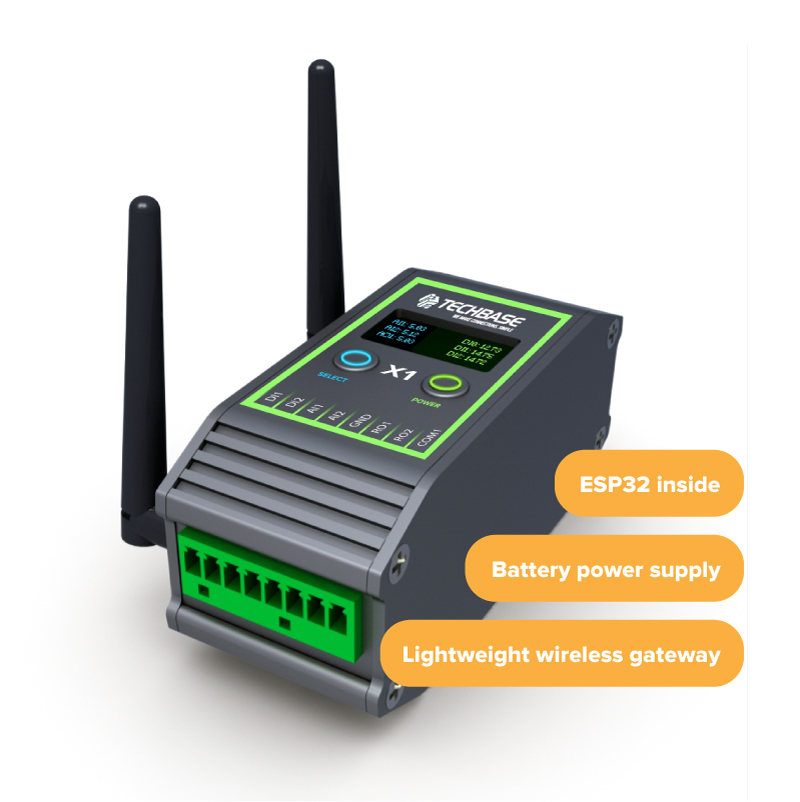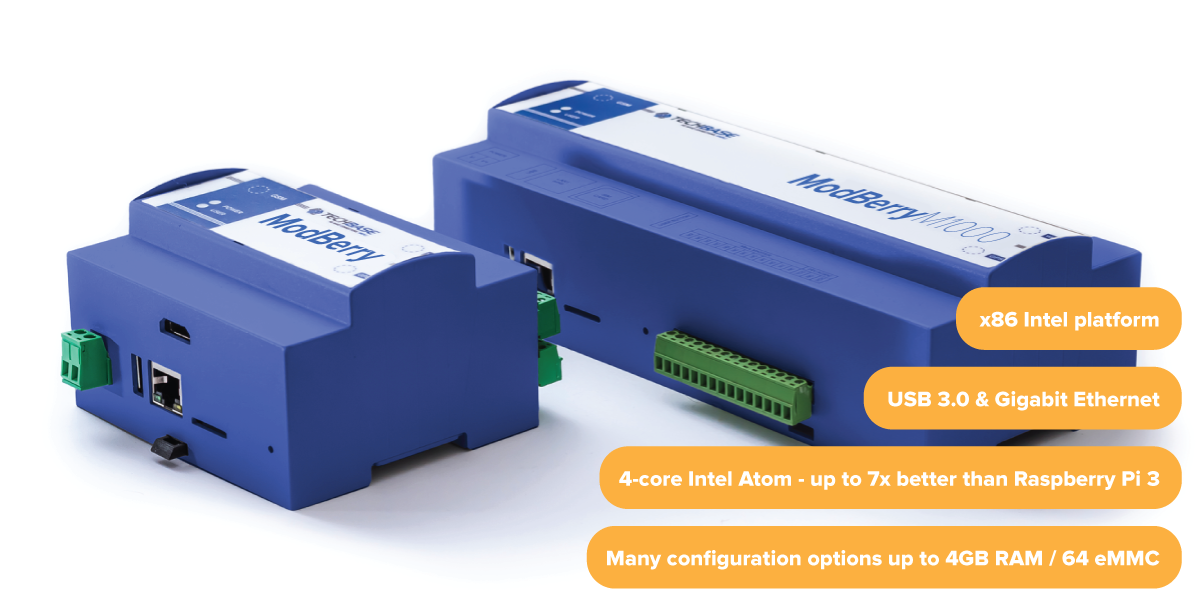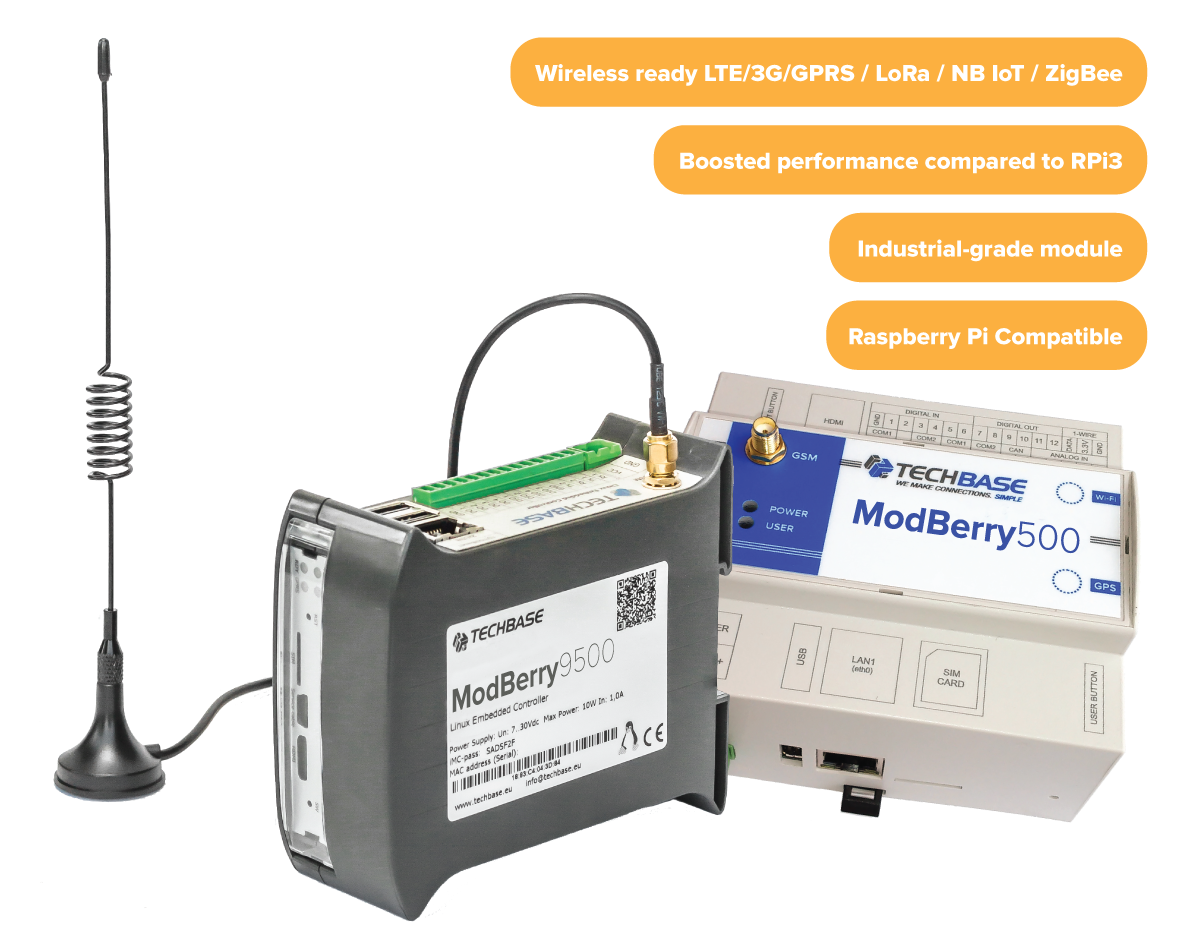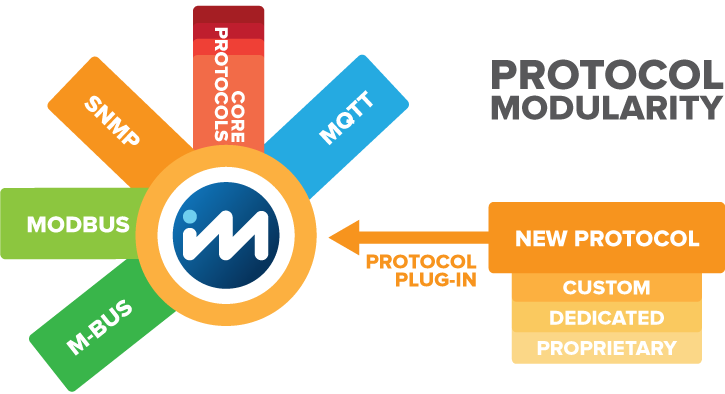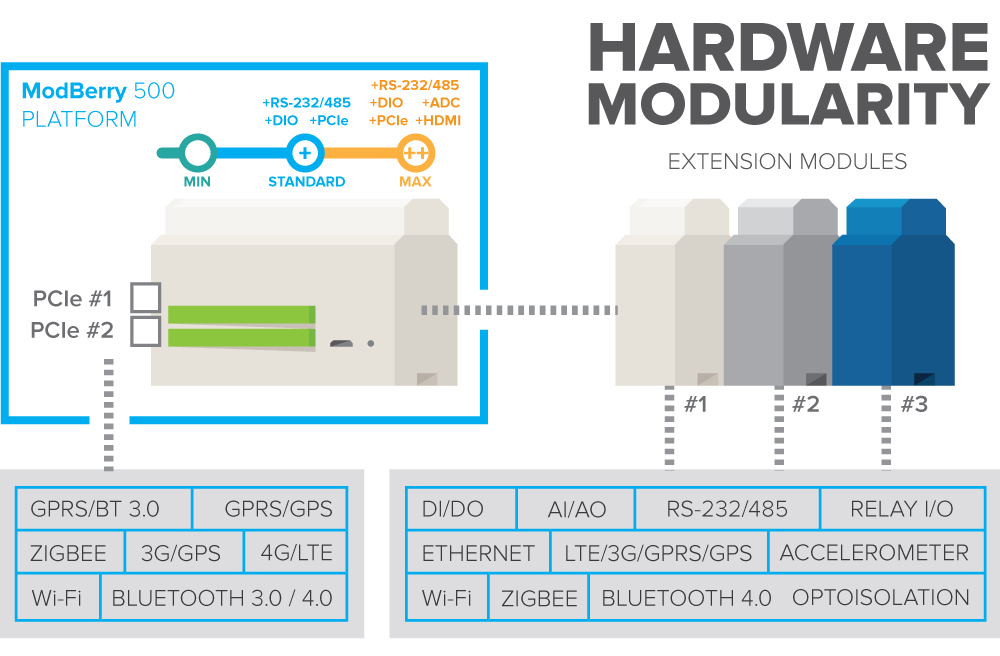The newest addition to TECHBASE’s Industrial IoT Ecosystem is a lightweight, but powerful energy-efficient and fully capable automation controller series, called Moduino – an industrial computer for remote data control and management, equipped with latest ESP32 compute module, wide range of serial, digital and analog inputs/outputs and wireless communication interfaces. This cost effective solution is perfect for end-point devices.
Moduino is powered by ultra-low power Dual-Core Tensilica LX6 240 MHz processor with 512KB RAM (up to 4MB) and 4MB SPI flash memory on-board. Integrated Wi-Fi/BLE modem and extra wireline/wireless interfaces make the Moduino micro-computer a versatile addition to Industrial IoT solutions offered by TECHBASE company. For more complex installations and for those, who need high integration capabilities, the Moduino devices can easily work remotely with existing ModBerry gateway for data accumulation and monitoring, to perform specific actions before sending the data to cloud services. The Moduino-ModBerry installation can work as standalone Ecosystem (for example via MQTT), providing fog-computing to any installation.
Wireless solution
Both Moduino X1 & X2 offer built-in Wi-Fi & Bluetooth 4.2 and support for LoRa, Sigfox, LTE cat. M1, NarrowBand-IoT (LTE cat. NB1) modems. Currently the support of ZigBee modems is under development. Moduino is equipped with standard U.FL (IPEX) external antenna connectors, allowing the device to reach up to 1km range (for Wi-Fi modem) and expanding the range for other wireless interfaces.
Battery and AC powered
Two multi-sized units X1 and X2 represent diversified approach to IIoT installations for remote data access & management. The main difference between Moduino X1 and it’s larger brother Moduino X2, apart from size, is a battery power support for X1 due to lower energy demand, making it independent from local power grid – perfect for remote installations and scattered objects monitoring. Both solutions can be powered by regular power supply with UPS support (LiPo & Supercapacitor batteries), offer wide range of serial, digital and analog inputs/outputs assisted with support of wireless communication interfaces.
Operating systems & software
Use of ESP32-WROVER compute module adds the support for real-time operating systems (compared to most Raspberry Pi based Linux and Windows OS versions), and openness of the Espressif’s platform to Moduino industrial automation controller. Thanks to enormous community of ESP32 and Arduino users and developers, the Moduino can now adapt existing software solutions, tools and programming environments, for example:
- ESP-IDF (Espressif IoT Development Framework)
- Zephyr Project (scalable RTOS)
- Arduino (C++)
- MicroPython
- Mongoose OS
- etc.

End-point sensors
The Moduino device is a comprehensive end-point controller for variety of sensors located throughout any installation. It fully supports temperature and humidity sensors and new ones are currently developed, e.g. accelerometer, gyroscope, magnetometer, etc.


